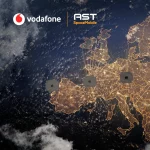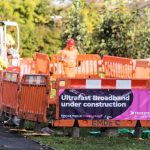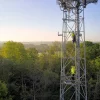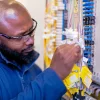Vodafone UK Trial Creates First On-Demand 5G Network Slice

Mobile operator Vodafone and their strategic supplier Ericsson have today announced having created the UK’s “first on-demand 5G network slice” in a successful lab trial, which could pave the way for future mobile broadband networks that can be created to serve different types of use with relative ease.
Older mobile networks (3G, 4G) have tended to be good at serving the same general service to lots of different sectors (general mobile usage, manufacturing, Internet of Things etc.), but that meant they didn’t tailor those services to the specific needs of each sector.
By comparison, 5G based Network Slicing essentially creates multiple virtual networks that sits on top of a single physical network, each of which can have different characteristics. Each network slice is essentially treated as an isolated end-to-end network. A slice can be dedicated to a specific location (an office or a campus) or the entirety of the UK.
Advertisement
However, Network Slicing is currently only available on 5G Standalone (SA) networks, while most of the existing 5G deployments in the UK still rely on some aspects of the old 4G service and that tends to slow them down a bit (e.g. latency in particular is not as good as it could be).
Vodafone’s Trial
According to Vodafone, the new “lab trial“, which was conducted on a 5G standalone (SA) network, represents somewhat of a UK first. In a joint lab demonstration, teams from Vodafone and Ericsson worked together to create an on-demand 5G network slice that was configured, using a Radio Access Network (RAN) slicing function, to provide the low [fast] latency and high bandwidth required for a Virtual Reality (VR) use case in a retail store.
The slice for this is said to have “guaranteed a download speed” of 260Mbps and latency of 12.4ms (milliseconds). In addition, it also delivered an upload speed of 16.5Mbps and jitter of 1.2ms (i.e. a change in the time it takes for a data packet to travel across a network). The process, from placing an order to creation of the network slice to carry live network traffic, is said to have taken just 30 minutes.
Andrea Dona, Chief Network Officer, Vodafone UK, said:
“Network slicing is an incredibly valuable step forward. By segmenting our network, and customising different slices for different requirements, we can bring to life new ideas that would be impossible otherwise. When we configure our network to empower new services, industries like gaming, entertainment and healthcare can enter a new era. What might seem like science fiction is one step closer thanks to network slicing.”
We should point out that this isn’t strictly the first test of network slicing on a 5G network in the UK. In 2018 EE (BT) claimed to have tested network slicing as part of a live BT Sport broadcast from Wembley Stadium in London (here), although we don’t know how comparable such an old test using non-final kit would be to Vodafone’s on-demand 5G SA trial.
Advertisement
One potential difficulty for all this is the thorny issue of Net Neutrality (i.e. treating all internet traffic as equal), which is one of the reasons why Ofcom are currently conducting a review of the topic (here). Mobile operators want to be able to harness Network Slicing to deliver tailored services (e.g. imagine a network slice with a guaranteed level of latency for online gamers), but that would potentially conflict with the current rules.
Finding some balance between the rules and the potential innovation that could be delivered by slicing is going to be tricky. But until there’s some regulatory certainty, one way or the other, then operators will remain cautious about their future plans for the technology.
Mark is a professional technology writer, IT consultant and computer engineer from Dorset (England), he also founded ISPreview in 1999 and enjoys analysing the latest telecoms and broadband developments. Find me on X (Twitter), Mastodon, Facebook, BlueSky, Threads.net and Linkedin.
« Ofcom UK Sets Out Approach to LEO Broadband Satellites





















































Comments are closed